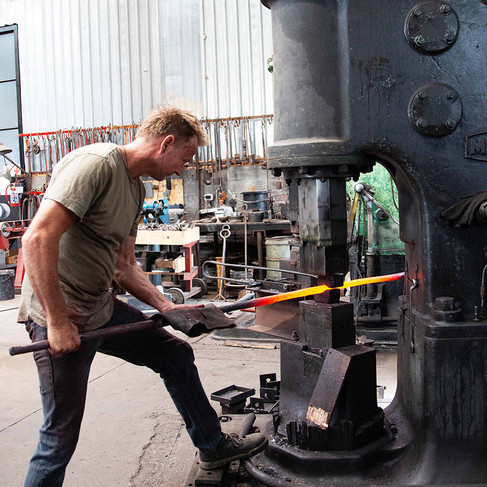BIJOU - Gem of Observatory
- Mia McCarthy

- Apr 24
- 3 min read
Updated: May 20
Time is thinner in some places than others. If you take a stroll down the industrial end of Lower Main Road in Observatory, you’ll know what I mean. Nestled amongst the suburb’s ever-present vintage stores is the beguiling Art Deco facade of the Bijou — the jewel in Observatory’s crown of anachronisms.

Designed to be a cinema by the architect William Hood Grant, the Bijou first opened its doors to the movie-going public in 1941. For close to a century, it has retained much of its distinctively ornamental facade, despite its unlikely and explosive era as a plastics factory. The building suffered extensive fire damage in the nineties before it was restored under the careful guardianship of Conrad Hicks.
“It wasn’t my intention to be a landlord,” confesses Hicks, a blacksmith, sculptor, and current owner of the Bijou. “Owner” is a slippery word. It’s more like a symbiotic relationship.
Hicks has set up his workshop in what used to be the seating area of the theatre. The cathedral-like room, once an edifice to cinema, now houses a collection of rare and beautiful blacksmithing tools. “Most of them were made at a time when the way that you engaged with the machine was really tactile and lovely,” reflects Hicks, gesturing to press with stylised curlicues that speak to a bygone devotion to industrial aesthetics.
For Hicks, tools represent something beyond their function. They are signifiers for human achievement, for culture. Reflecting on the very first anvil he bought in his early twenties, he proposes that the ting ting ting of a blacksmith striking steel is as historic a sign of human presence and culture as the peals of church bells — an epigenetic memory recognised even by generations who have never even seen a blacksmith at work. A thing of beauty.
“The relationship between beauty and function is that if it works perfectly, it is beautiful,” explains Hicks. If you have beautiful tools, he insists, you will make beautiful things. I ask him if this appreciation for beauty is what drew him to the Bijou and its inescapable charm in the first place.
“I mean, it’s exceptional,” he says. It is. “It had also burned down, so there was no overbearing association. It was sort of neutral, but full of expressive potential.” When Hicks purchased the Bijou, it had no electricity or running water. Half of the building was unroofed, the staircases were reduced to rubble, and trees were growing in the building’s myriad cracks and crevices. Hicks began his foray into blacksmithing as an apprentice to a restorer, so he used his expertise to resurrect (but not reinvent) the Bijou.
“I wanted to leave the patina of the fire…it’s part of the story. I didn’t want to change it into something. I just wanted to make it habitable. The richness of the textures and all of that are part of the integrity of the place, you know.” A tour of the Bijou reveals a well-preserved patina. The interior walls appear to be bubbling, warped by intense heat. Parts of the outdoor amphitheatre have crumbled away. Nevertheless, the building never feels unfinished. It feels like multiple iterations of itself at once.
Time is thinner in some places than others, and time is especially diaphanous in the Bijou. To walk through the space is to walk as a time traveller. Mid-century movie tickets are framed on walls that were ravaged by fire fifty years after those wheels of film were unwound. You might mistake it for a museum if it weren’t for the constant metallic chorus of Hicks’ blacksmithing machines, not to mention the visually stunning contributions of the Bijou’s other resident artists.
After years of episodic restoration, the Bijou has become a home to a collective of artists whose studios are housed in the old screening rooms, the amphitheatre, the loft. The Bijou has lived many lifetimes, but its enduring beauty — thanks in no small part to the restorative efforts of its custodian, Conrad Hicks — continues to attract those who have dedicated their lives to aesthetic pursuits.
“I think if I were in an ugly place, I would be unhappy and I wouldn’t be able to work,” muses Hicks. I’ve just asked him if he thinks that the Bijou’s space informs his work. “I kind of feel at home now, but I’m not sure how it affects things. It’s also for the observer to see.”
If you were to see Conrad Hicks’ sculptures at his workshop in the Bijou, you might observe the following: a fine balance of function and form, a clear-eyed respect for time-honoured practices, and a reverence for beauty. The story of the Bijou is delightful, yes, but it also inspires awe. It’s a site where multiple threads in time converge, drawn together as if by a needle and woven in place through the careful ministrations of a curator.
Photographer: Sabina van Rooyen
THE BIJOU
178 Lower Main Rd, Observatory, Cape Town,
@thebijouobservatory
conradhicks_artistblacksmith
















Comments